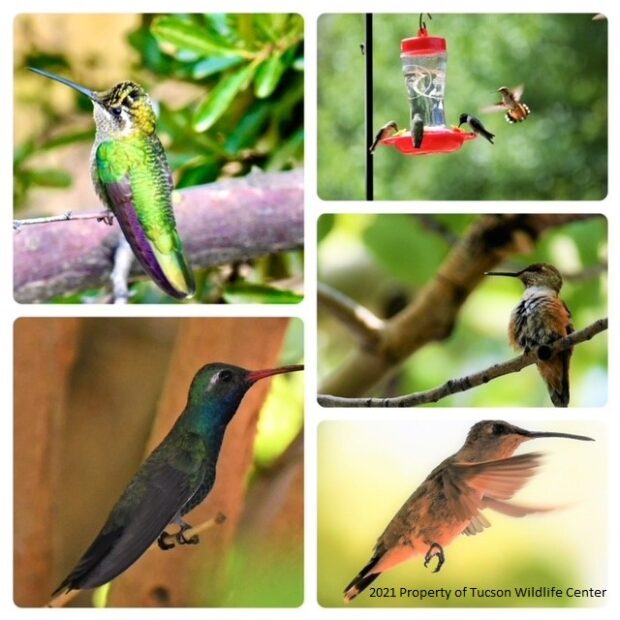
Did you know there are 300 species of Hummingbirds in the world and 27 species visit and breed within the U.S.A.?
Arizona and the southwestern border is home to 13 species, the most species of any state
Even though most migrate farther south for winter, the cold temperatures has increased the number of concerned citizens calling Tucson Wildlife Center asking how to care for these jeweled visitors who remain.
Here are a few facts and hints to remember: 1. Hummingbirds are hardy and tolerant of cold weather. To conserve energy, they enter a state called “torpor,” a mini-hibernation during which their 114 degree body temperature lowers to near 50 degrees.
2. Hummingbirds need food to withstand the cold.
3. Be sure to take hummingbird feeders in at night and return them early in the morning so that the nectar is warm.
4. Clean feeders often and replenish with fresh nectar.
5. If, you don’t make your own nectar, do not buy commercial brands with red dye. Red dye is poisonous to birds.
6. Hummingbirds drink more than nectar. They eat insects as well. Be careful using pesticides that may harm wildlife.
7. If you find a hummingbird in distress after temperatures have warmed, contact Tucson Wildlife Center at 520-290-9453.
Following these guidelines, you will enjoy and preserve the beauty and fierce, frolicking, activity of hummingbirds in your yard, one of nature’s most endearing creatures.
Pictured counter-clockwise 1. Rivoli’s hummingbird, sometimes known as the magnificent hummingbird 2. male, broad-billed hummingbird 3. female, broad-billed hummingbird 4. Rufus Hummingbird 5. feeder with Rufus and black-chinned hummingbird

